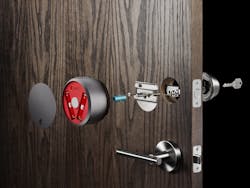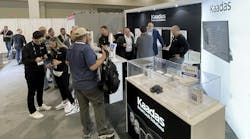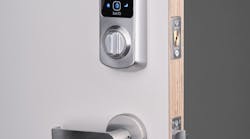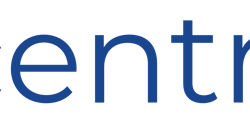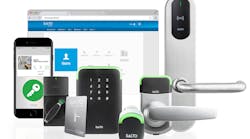The influx of smart home devices flooding the market over the past few years has created a bit of a dilemma for consumers as they look at the best way to get these Internet of Things (IoT) devices to work seamlessly together, while being customizable and able to adapt as new devices are added to their smart home ecosystem. Organizations such as the Z-Wave Alliance, which has more than 4,000 Z-Wave registered devices, and The Connectivity Standards Alliance, which has more 5,000 Zigbee registered devices, are leading the way around interoperability, providing a standard for manufacturers and consumers to get behind and trust.
Both organizations have been making big strides over the past few years in creating more transparency, adding new members and advisors, while providing more resources, testing and research to help the smart home become truly open and interoperable. Add to that the rise of the new open standard, Matter, and we have some very interesting times ahead for the smart home.
Z-Wave Alliance
The Z-Wave Alliance, a standards development organization dedicated to developing and advancing Z-Wave technology as an open and internationally recognized ITU standard (G.9959) for smart home and IoT solutions, revealed in its 2023 Ecosystem Report that interoperability consistently ranks as a top feature that both current Z-Wave owners and non-owners define as “a must” in any additional products that they look to purchase.
“The 2023 Z-Wave Ecosystem Report provides a much-needed referendum on interoperability,” says Z-Wave Alliance Executive Director Mitch Klein. “Interoperability isn’t top of mind when you go out to buy your first product, but once you start realizing that you've got multiple products and how they should be interoperating and what they should be providing, we are seeing people pay much more attention to the entire smart home ecosystem and what that should look like.”
Klein is spot on as the report shows a direct relationship between the number of smart home devices owned and the importance of interoperability, which increases exponentially as more devices are owned. In the U.S. alone, 54 percent of device owners consider interoperability an important consideration in their next purchase. And with both market maturity and an increasing average number of devices owned, consumer interest in interoperability will continue to increase. In addition, the report notes that interoperability with products already owned is a top requirement for future purchases across all three European countries (Germany, France and the UK) as well as the U.S. market.
Recent Z-Wave news includes surpassing 4,100 certified devices, new board members and membership options for individuals and schools, as well as the completion of the Z-Wave Source Code Project, which opens development of Z-Wave and enables members to contribute code to shape the future of the protocol under the supervision of the new OS Work Group (OSWG). Z-Wave also released the first Z-Wave Long Range (Z-Wave LR) products, a specification that uniquely enables IoT applications beyond the home. With a range of up to a mile away, Z-Wave LR provides the performance and scalability needed in MDU and hospitality deployments, for example, which Klein notes are two giant untapped markets for smart products and smart locks, especially.
Security Driving Decisions
As Klein points out, “There's no question that security continues to drive the smart home marketplace, not just in the U.S., but also in the UK and France. And we're also seeing that Z-Wave continues to be the go-to technology that the door lock companies are deploying. We've got, of course, all the legacy companies building great new products, whether you're talking about Yale or Kwikset or August, for example. And then we have start-ups and companies like Kaadas, which is big in Europe and is now focused on the U.S. market.”
The Ecosystem Report provides interesting insight into the purchase channel, as smart locks, gates and security systems have the highest purchase rate from a dealer, integrator or professional installer. Interestingly, the top 5 devices respondents are interested in adding to security are:
- 77% Wi-Fi Networked Camera
- 74% Smart Door Lock
- 73% Smart Video Doorbell
- 72% Smart Smoke/CO Detector
- 71% Smart Light Bulb
Top 5 devices respondents are interested in adding to home control system:
77% Wi-Fi Networked Camera
72% Smart Door Lock
71% Smart Video Doorbell
68% Smart Smoke/CO Detector
66% Smart Light Bulb
DIY vs. Professional Installation
While not new, the whole DIY vs. professional installation debate continues. Interestingly, the Z-Wave report reveals “ample opportunities for the professional channel to enable direct-to-consumer sales of add-on devices,” as a strong pattern has emerged suggesting growing consumer confidence for investing in smart home products (see above for top devices of interest).
“Clearly a do-it-yourself marketplace helps to increase the total addressable market,” says Klein. “We are seeing DIY helping to drive the size of the market but also to drive business to professionals.”
Similar to what Park Associates found in its research (see article on page 10), Z-Wave’s report shows significant growth for smart locks over the past few years. Klein points out that while installers will always need to know the mechanical side of things, adding knowledge on the smart lock side can help grow their business. “That's something I would really drive home for your readers is not to be afraid of the technology, but to embrace it, because there are enormous opportunities for that marketplace.”
CSA and Matter
Established in 2002, The Connectivity Standards Alliance (CSA) is the foundation focused on the future of the IoT, with a wide-ranging global membership that collaborates to create and evolve universal open standards for the products transforming the smart home and beyond. CSA’s release of Matter 1.0 last year and Matter 1.1 in May has created momentum within the smart home industry. Matter is an open-source connectivity standard for smart home and Internet of things devices, with the goal to make smart devices work with each other regardless of which company manufactures them.
“This is a major inflection point for the IoT,” says Tobin Richardson, president and CEO of the Connectivity Standards Alliance. “As we become more connected and break down the walls between the digital and physical world, we need to work together to make those connections meaningful. Matter and our membership are tackling this challenge head-on. With collaboration, inclusiveness, and a deep sense of responsibility to the market and consumers, Matter has the power to create a more connected, safe, and useful Smart Home.”
Since the release of Matter 1.0 in October 2022, CSA has seen 17,991 downloads of the specification with 1,135 new products certified by the Alliance. Matter’s momentum has resulted in more than 60 members joining the Alliance since the specification’s release. “These statistics demonstrate we are well on the way to the future we envision for the IoT, where Matter aims to solve problems for security, connectivity, innovation, complexity, and trust,” CSA said.
With the initial launch of Matter, a variety of popular smart home product categories are supported including lighting and electrical, HVAC controls, window coverings and shades, safety and security sensors, door locks, video players, protocol bridges, and controllers embedded in many different kinds of products.
In addition to teams working on cameras, home appliances, and more advanced energy management use cases, the Alliance formed teams to work on closures (such as doors and gates), environmental quality sensors and controls, smoke and carbon monoxide detectors and ambient motion and presence sensing. The Alliance has called on all interested companies looking to develop connected solutions in these areas to join the Alliance and build what’s next in Matter.
The recent release of Matter 1.1 is the result of the collective effort of hundreds of companies and individuals who have gathered as members of CSA and contributed to the ongoing progress and success of this evolving technology. CSA says Matter 1.1 creates an improved path forward for developers, and new user experiences, making it easier for device makers and developers to get started with Matter, and to more easily certify products they’ve developed and get them to users faster. Matter also enhanced support for battery-operated devices — an important feature across many smart home categories.
“The promise of Matter is the accelerated proliferation of connected things by bringing simplicity and interoperability to consumers who can now mix and match products from different ecosystems with greater ease and reliability,” says Matt Johnson, CEO of Silicon Labs. “And the foundation of Matter’s interoperability begins at the silicon level. Silicon Labs is proud to have contributed our breadth of protocol support, depth of wireless expertise, and focus on the IoT to Matter’s development.”
One of the benefits and differentiators of Matter is its publicly available specification and open-source SDK that allows all developers to work from a common specification and code base. Of course, it’s important that those tools are easy to work with, so CSA has taken feedback and learning from members and early developers and made clarifications and clean-up to the specification. This will make it easier for developers to dive in, understand, and use the specification. It’s also easier for developers to contribute to the Matter specification, with better guidance for contributing support for new device types.
With the goal of a twice-yearly release cycle, CSA is actively working on the next version of Matter with new features and device type support expected later this year. As an open, industry standard, companies interested in bringing their ideas and device-type support to Matter can join the Connectivity Standards Alliance and the Matter Working Group.
CSA Opens New Interoperability Test Facility
Further accelerating that future, the Alliance announced the launch of its Interoperability Testing Facility (ITF) for Matter products in Portland, Ore. This facility provides interoperability testing services to members of the Alliance developing Matter products for certification. It includes an extensive range of Matter controllers, hubs, and end devices configured to check the most typical sets of devices and installation configurations found in residential settings.
Interop testing goes even further than the specification compliance testing performed for certification purposes. It enables checking of product behavior and user experience in real-life settings with a variety of different products, hubs, and controllers across different brands, and in various network configurations, including mobile apps and controller interactions, providing feedback to device, app, and platform makers, with a goal of enabling increased product quality and an improved user experience.
Members may utilize these facilities by booking slots to attend in person, witness interop testing, or send their products to be tested in their absence. The ITF also provides a testing environment for Zigbee products. To book a slot, please email your request to [email protected].
